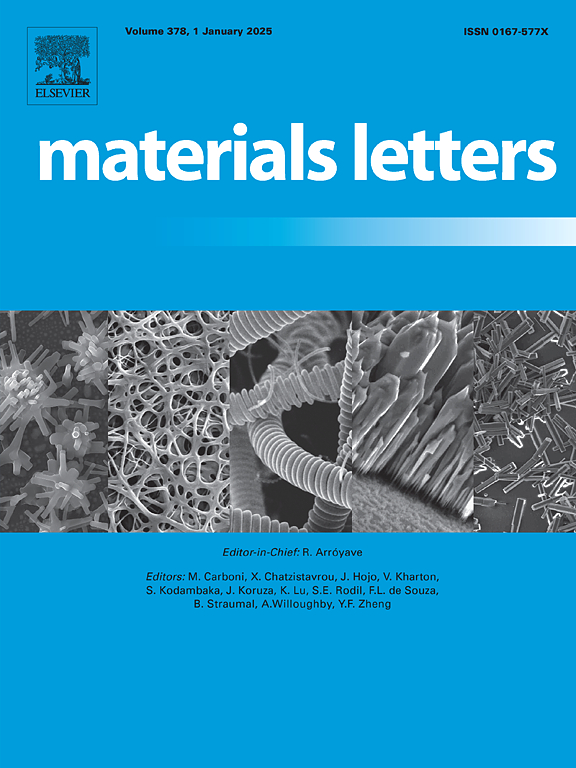Improving the performance of silver coating deposited on copper through corrosion inhibitors
IF 2.7
4区 材料科学
Q3 MATERIALS SCIENCE, MULTIDISCIPLINARY
引用次数: 0
Abstract
Immersion silver plating is an important surface finishing technique in the integrate circuit industry. However, it often results in silver coatings with poor compactness and adhesion due to the significant difference in potentials between silver and copper. The corrosion inhibitors of copper, rather than complexing agents of silver ions, were used to improve the immersion plated silver coating performance on copper. It was found the combined use of benzotriazole and imidazole could regulate the erosion rate of the copper substrate and improve the quality of the silver coating. The effects of different inhibitors concentrations on surface morphology, elemental composition, corrosion resistance, hardness, and conductivity of the silver coating were studied. The results indicated the optimal concentration of the combined inhibitors was 0.058 mol∙L-1, which enhanced the compactness, crystallinity, and overall performance of the silver coating by passivating the copper surface and regulating the silver deposition process.

缓蚀剂改善铜表面银镀层的性能
浸没镀银是集成电路工业中一种重要的表面处理技术。然而,由于银和铜之间的电势差异很大,往往导致银涂层致密性和附着力差。采用铜的缓蚀剂而不是银离子的络合剂来改善铜表面浸镀银涂层的性能。结果表明,苯并三唑和咪唑联合使用可以调节铜基体的腐蚀速率,提高镀银层的质量。研究了不同抑制剂浓度对银镀层表面形貌、元素组成、耐蚀性、硬度和电导率的影响。结果表明,复合抑制剂的最佳浓度为0.058 mol∙L-1,可通过钝化铜表面和调节银沉积过程,提高银镀层的致密性、结晶度和整体性能。
本文章由计算机程序翻译,如有差异,请以英文原文为准。
求助全文
约1分钟内获得全文
求助全文
来源期刊

Materials Letters
工程技术-材料科学:综合
CiteScore
5.60
自引率
3.30%
发文量
1948
审稿时长
50 days
期刊介绍:
Materials Letters has an open access mirror journal Materials Letters: X, sharing the same aims and scope, editorial team, submission system and rigorous peer review.
Materials Letters is dedicated to publishing novel, cutting edge reports of broad interest to the materials community. The journal provides a forum for materials scientists and engineers, physicists, and chemists to rapidly communicate on the most important topics in the field of materials.
Contributions include, but are not limited to, a variety of topics such as:
• Materials - Metals and alloys, amorphous solids, ceramics, composites, polymers, semiconductors
• Applications - Structural, opto-electronic, magnetic, medical, MEMS, sensors, smart
• Characterization - Analytical, microscopy, scanning probes, nanoscopic, optical, electrical, magnetic, acoustic, spectroscopic, diffraction
• Novel Materials - Micro and nanostructures (nanowires, nanotubes, nanoparticles), nanocomposites, thin films, superlattices, quantum dots.
• Processing - Crystal growth, thin film processing, sol-gel processing, mechanical processing, assembly, nanocrystalline processing.
• Properties - Mechanical, magnetic, optical, electrical, ferroelectric, thermal, interfacial, transport, thermodynamic
• Synthesis - Quenching, solid state, solidification, solution synthesis, vapor deposition, high pressure, explosive
 求助内容:
求助内容: 应助结果提醒方式:
应助结果提醒方式:


